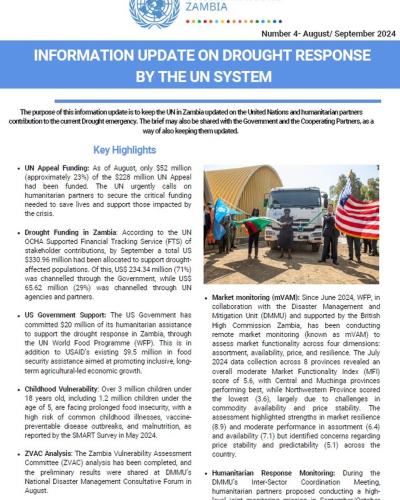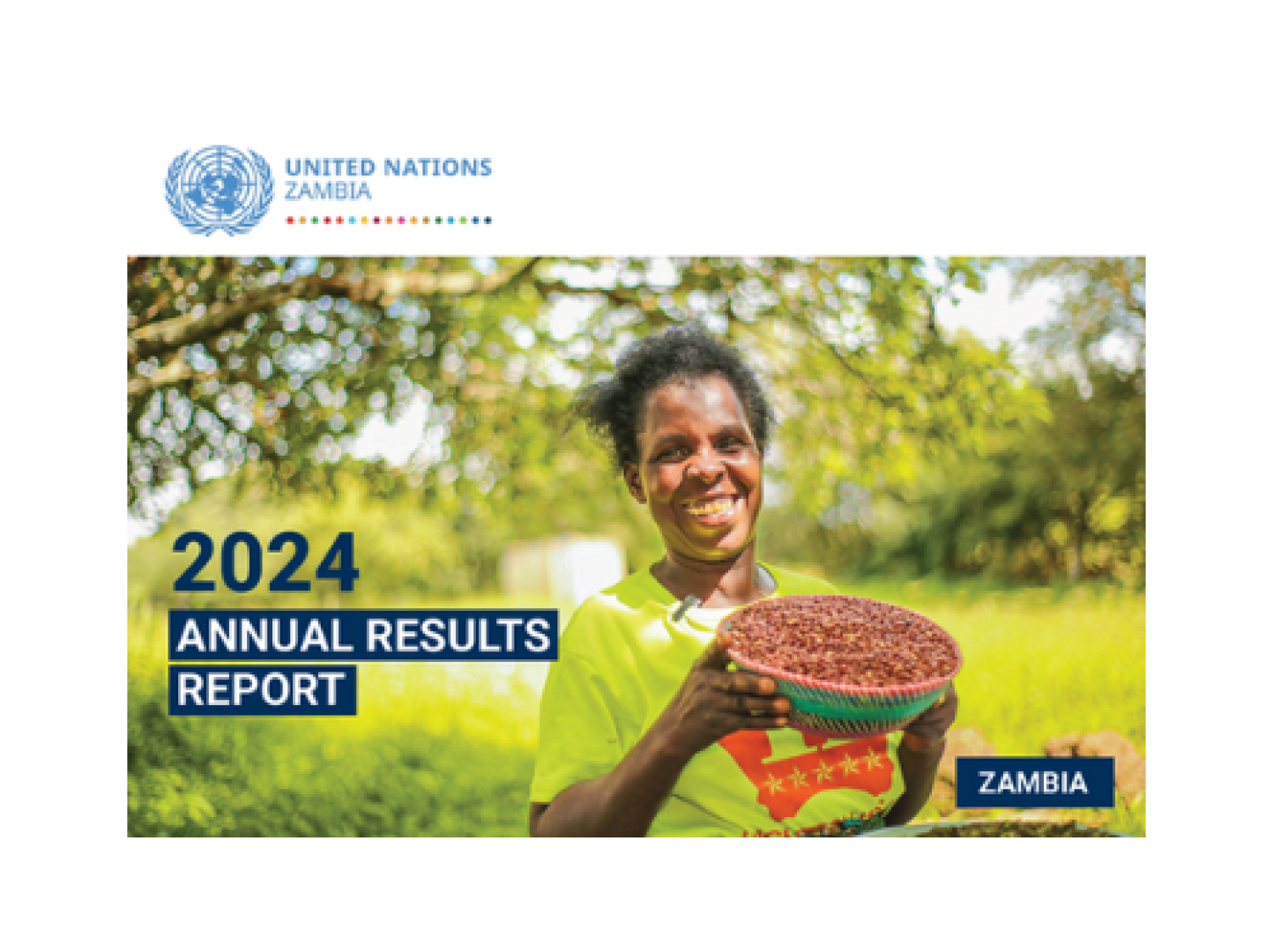Information Update on Drought Response by the UN System - Nr4_August/September 2024

UN Appeal Funding: As of August, only $52 million (approximately 23%) of the $228 million UN Appeal had been funded. The UN urgently calls on humanitarian partners to secure the critical funding needed to save lives and support those impacted by the crisis.
Drought Funding in Zambia: According to the UN OCHA Supported Financial Tracking Service (FTS) of stakeholder contributions, by September a total US $330.96 million had been allocated to support drought affected populations. Of this, US$ 234.34 million (71%) was channelled through the Government, while US$ 65.62 million (29%) was channeled through UN agencies and partners.
US Government Support: The US Government has committed $20 million of its humanitarian assistance to support the drought response in Zambia, through the UN World Food Programme (WFP). This is in addition to USAID’s existing $9.5 million in food security assistance aimed at promoting inclusive, long term agricultural-led economic growth.
Childhood Vulnerability: Over 3 million children under 18 years old, including 1.2 million children under the age of 5, are facing prolonged food insecurity, with a high risk of common childhood illnesses, vaccine preventable disease outbreaks, and malnutrition, as reported by the SMART Survey in May 2024.
ZVAC Analysis: The Zambia Vulnerability Assessment Committee (ZVAC) analysis has been completed, and the preliminary results were shared at DMMU’s National Disaster Management Consultative Forum in August.
Market monitoring (mVAM): Since June 2024, WFP, in collaboration with the Disaster Management and Mitigation Unit (DMMU) and supported by the British High Commission Zambia, has been conducting remote market monitoring (known as mVAM) to assess market functionality across four dimensions: assortment, availability, price, and resilience. The July 2024 data collection across 8 provinces revealed an overall moderate Market Functionality Index (MFI) score of 5.6, with Central and Muchinga provinces performing best, while Northwestern Province scored the lowest (3.6), largely due to challenges in commodity availability and price stability. The assessment highlighted strengths in market resilience (8.9) and moderate performance in assortment (6.4) and availability (7.1) but identified concerns regarding price stability and predictability (5.1) across the country.
Humanitarian Response Monitoring: During the DMMU’s Inter-Sector Coordination Meeting, humanitarian partners proposed conducting a high-level joint monitoring mission in September/October 2024.





















